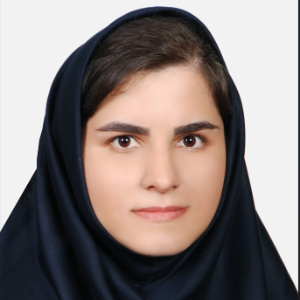Title : Comparative assessment of biosorption efficiency of two agricultural waste for heavy metal removal
Abstract:
Environmental issues, primarily driven by human activities, have significantly impacted water quality. Natural processes like rainfall can introduce particles and dissolved substances into water, but human activities such as industrial discharges and agricultural runoff introduce more harmful pollutants, further degrading water quality. The necessary water quality depends on its intended use, ranging from drinking to industrial applications. As water moves through both natural and human-influenced cycles, its characteristics often change, requiring treatment to meet specific standards. Sustainable water management practices and advanced wastewater treatment technologies are essential to address these challenges. These innovations protect water quality and recover valuable resources, supporting a circular economy.
Additionally, the use of agricultural waste as a bio-absorbent for heavy metals offers a sustainable and cost-effective solution for water treatment. By repurposing agricultural by-products like nut shells, this approach reduces waste and enhances water quality, aligning with environmentally friendly resource management practices. This study, which compares the biosorption capacities of two agricultural wastes that are abundantly produced in Iran, provides crucial insights. Specifically, it focuses on the examination and comparison of peanut and walnut shells in terms of their ability to adsorb certain water pollutants, particularly heavy metals. The biosorbent samples were prepared by obtaining the biosorbents with a specific particle size and storing them until they were added to the contaminated water. These prepared biosorbents were then introduced into contaminated water in specific proportions. The concentration of the heavy metals, as well as the pH, were monitored at specified time intervals. Throughout the experiment, the temperature was maintained at a constant 25 degrees Celsius. The results, which revealed that walnut shells demonstrated a higher biosorption capacity for the pollutants studied compared to peanut shells, are of significant importance. Among the heavy metals analyzed, cadmium and lead showed the highest levels of absorption by both biosorbents. Further research is recommended to investigate the performance of biosorbents with varying particle sizes, wastewater with different pH levels, and the absorption of heavy metals by these biosorbents at different wastewater temperatures.
Audience Take Away Notes:
- The audience will learn about the biosorption capabilities of agricultural residues, specifically peanut and walnut shells, for removing heavy metals from contaminated water. This knowledge can be applied to environmental management and waste treatment practices.
- Environmental scientists, engineers, and waste management professionals can use these findings to develop more effective, sustainable, and cost-efficient water purification and pollutant removal methods. This can be particularly useful in areas with high agricultural waste and water pollution levels.
- Yes, it provides a basis for further investigation into the use of agricultural by-products in environmental applications. Faculty members in environmental science, chemistry, and engineering could use this study to expand their research on sustainable materials or incorporate it into their teaching on water treatment technologies.
- Yes, using readily available agricultural waste as biosorbents offers a practical and low-cost solution for water purification, which could simplify the design and implementation of environmental remediation systems.
- This research provides new information on the comparative effectiveness of different biosorbents, which can improve the accuracy of designs for water treatment systems. Designers can use this data to select the most efficient materials for specific contaminants, optimizing the performance of their systems.
- List all other benefits.
- Sustainability: Promotes waste materials, reduces waste, and promotes sustainable practices.
- Cost-effectiveness: Utilizes low-cost materials, which can make environmental cleanup efforts more affordable.
- Environmental Impact: Potentially reduces the reliance on synthetic or chemical adsorbents, decreasing the environmental footprint of water treatment processes.
- Flexibility: The study’s findings on the impact of particle size and pH can be tailored to different environmental conditions, enhancing the solution's versatility.
- Foundation for further research: This provides a strong basis for further studies on optimizing biosorbents and exploring their application in different contexts or with different pollutants.



